Cloudflare and Human Rights: Joining the Global Network Initiative (GNI)

Consistent with our mission to help build a better Internet, Cloudflare has long recognized the importance of conducting our business in a way that respects the rights of Internet users around the world. We provide free services to important voices online - from human rights activists to independent journalists to the entities that help maintain our democracies - who would otherwise be vulnerable to cyberattack. We work hard to develop internal mechanisms and build products that empower user privacy. And we believe that being transparent about the types of requests we receive from government entities and how we respond is critical to maintaining customer trust.
As Cloudflare continues to expand our global network, we think there is more we can do to formalize our commitment to help respect human rights online. To that end, we are excited to announce that we have joined the Global Network Initiative (GNI), one of the world's leading human rights organizations in the information and communications Technology (ICT) sector, as observers.
Business + Human Rights
Understanding Cloudflare’s new partnership with GNI requires some additional background on how human rights concepts apply to businesses.
In 1945, following the end of World War II, 850 delegates Continue reading
Announcing wrangler dev — the Edge on localhost
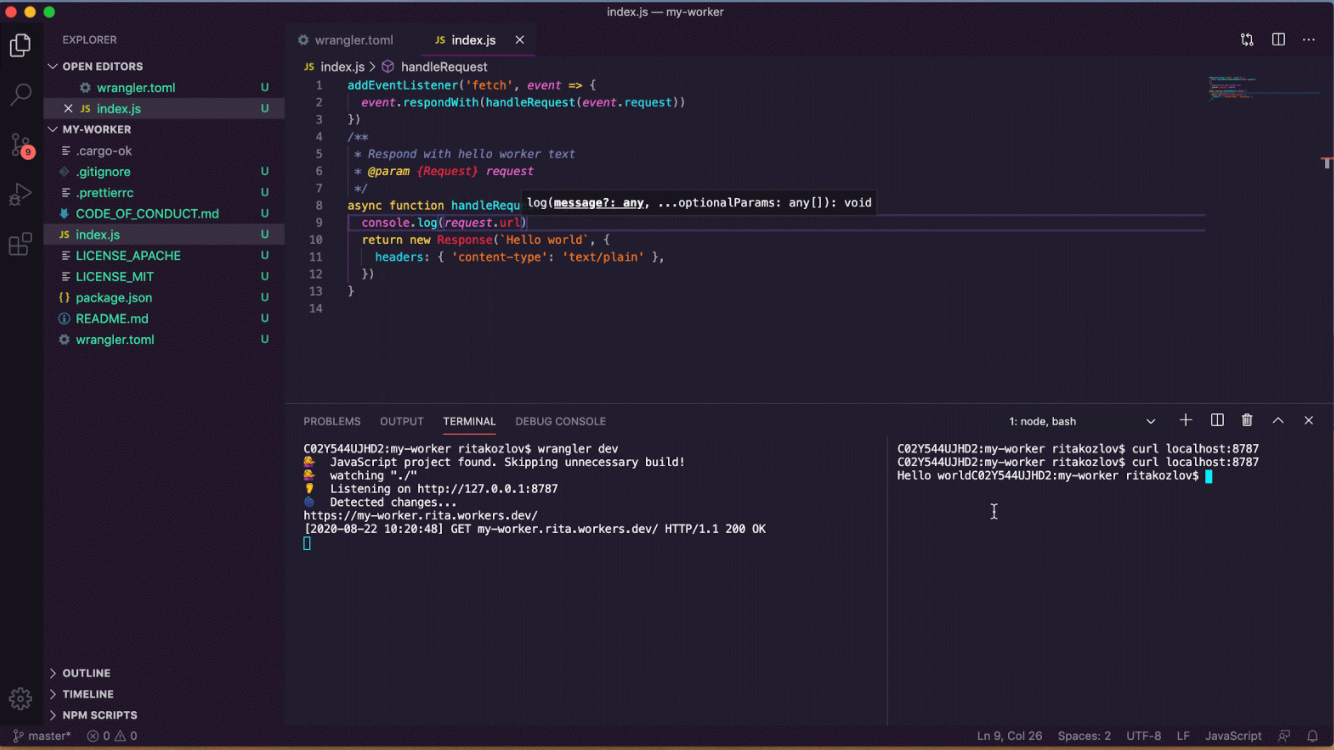
Cloudflare Workers — our serverless platform — allows developers around the world to run their applications from our network of 200 datacenters, as close as possible to their users.
A few weeks ago we announced a release candidate for wrangler dev — today, we're excited to take wrangler dev, the world’s first edge-based development environment, to GA with the release of wrangler 1.11.
Think locally, develop globally
It was once assumed that to successfully run an application on the web, one had to go and acquire a server, set it up (in a data center that hopefully you had access to), and then maintain it on an ongoing basis. Luckily for most of us, that assumption was challenged with the emergence of the cloud. The cloud was always assumed to be centralized — large data centers in a single region (“us-east-1”), reserved for compute. The edge? That was for caching static content.
Again, assumptions are being challenged.
Cloudflare Workers is about moving compute from a centralized location to the edge. And it makes sense: if users are distributed all over the globe, why should all of them be routed to us-east-1, on the opposite side of the world, Continue reading
Improving the Wrangler Startup Experience

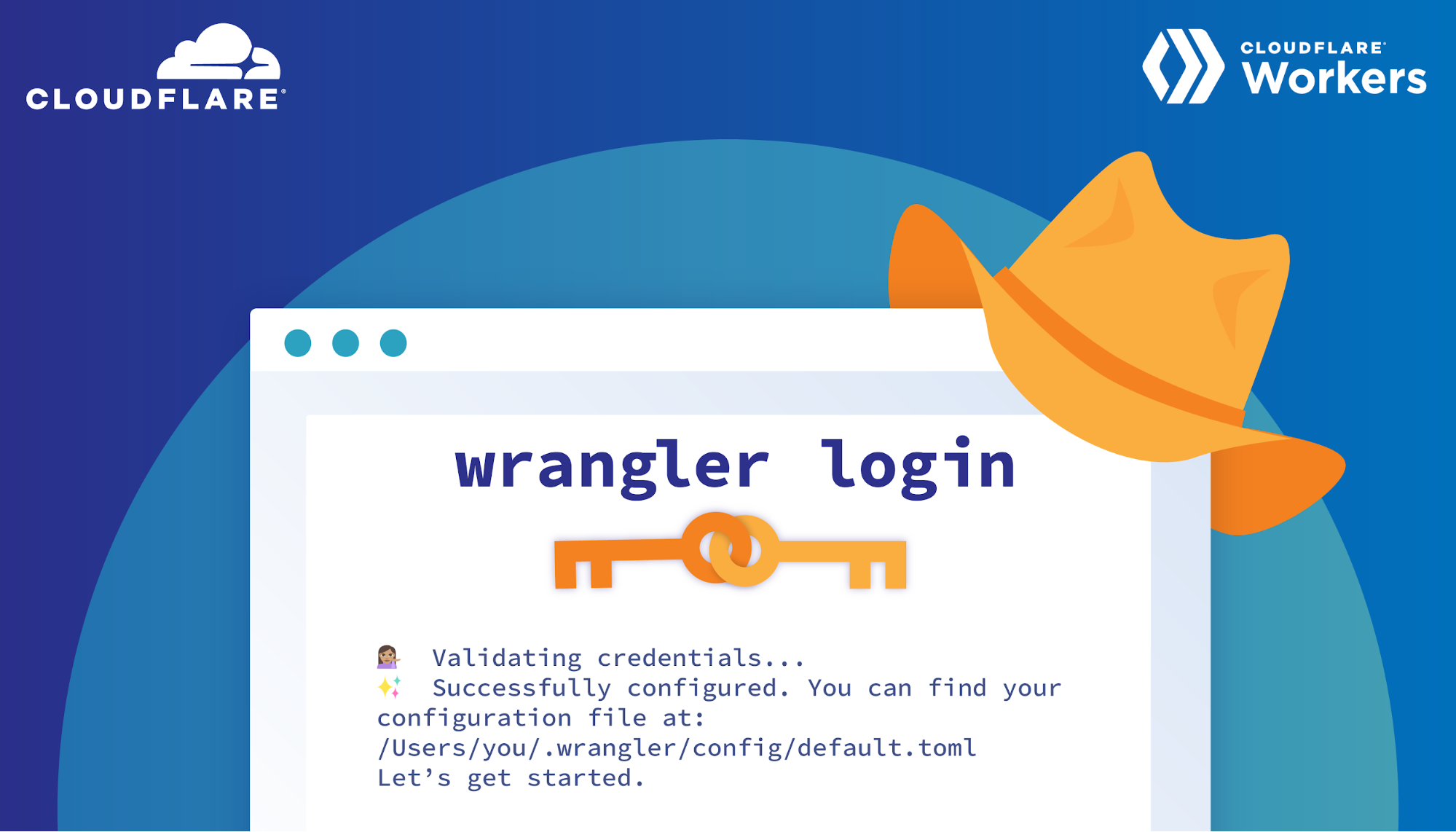
Today I’m excited to announce wrangler login, an easy way to get started with Wrangler! This summer for my internship on the Workers Developer Productivity team I was tasked with helping improve the Wrangler user experience. For those who don’t know, Workers is Cloudflare’s serverless platform which allows users to deploy their software directly to Cloudflare’s edge network.
This means you can write any behaviour on requests heading to your site or even run fully fledged applications directly on the edge. Wrangler is the open-source CLI tool used to manage your Workers and has a big focus on enabling a smooth developer experience.
When I first heard I was working on Wrangler, I was excited that I would be working on such a cool product but also a little nervous. This was the first time I would be writing Rust in a professional environment, the first time making meaningful open-source contributions, and on top of that the first time doing all of this remotely. But thanks to lots of guidance and support from my mentor and team, I was able to help make the Wrangler and Workers developer experience just a little bit better.
The Problem
The main improvement Continue reading
Delivering HTTP/2 upload speed improvements
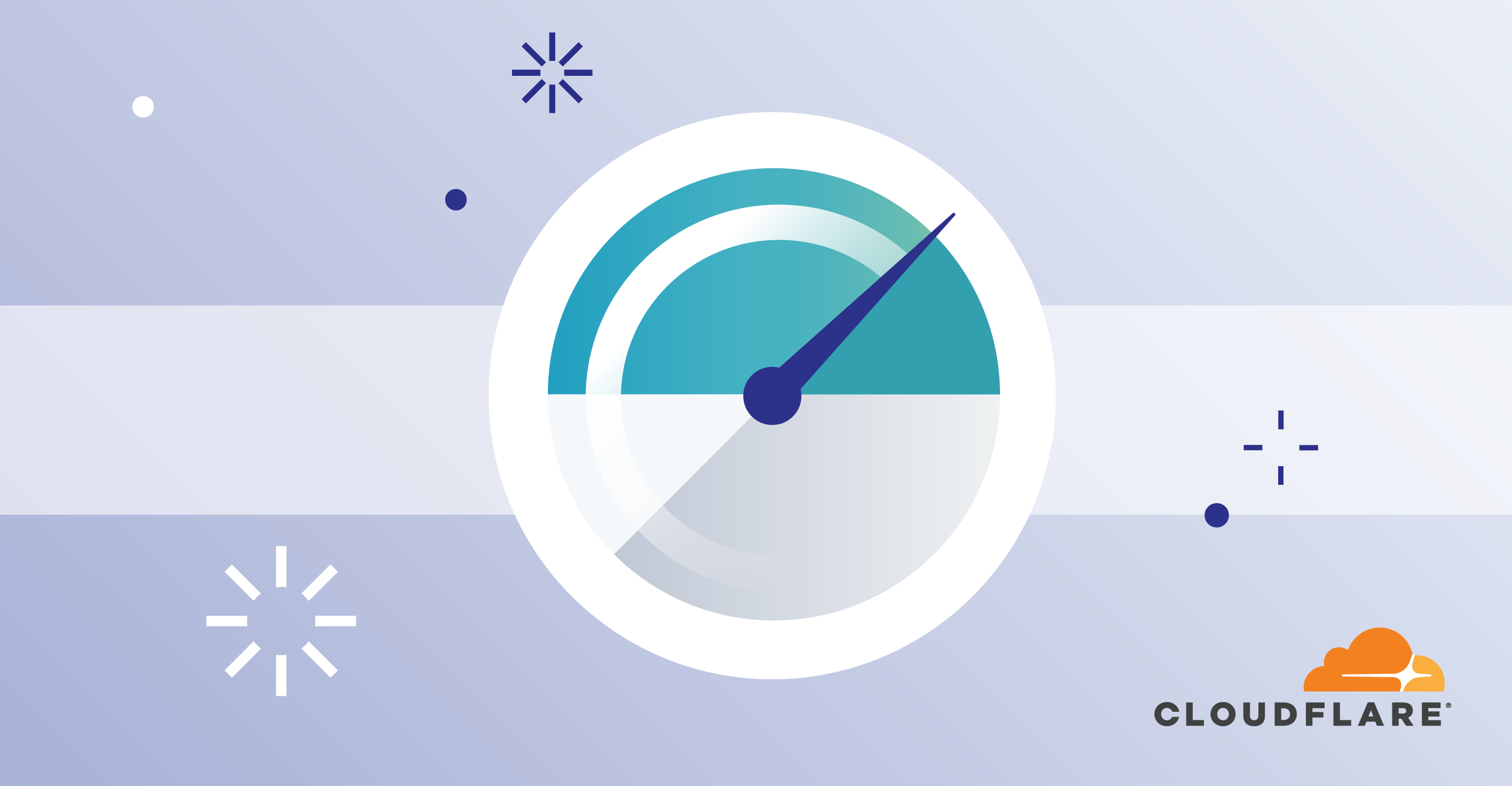
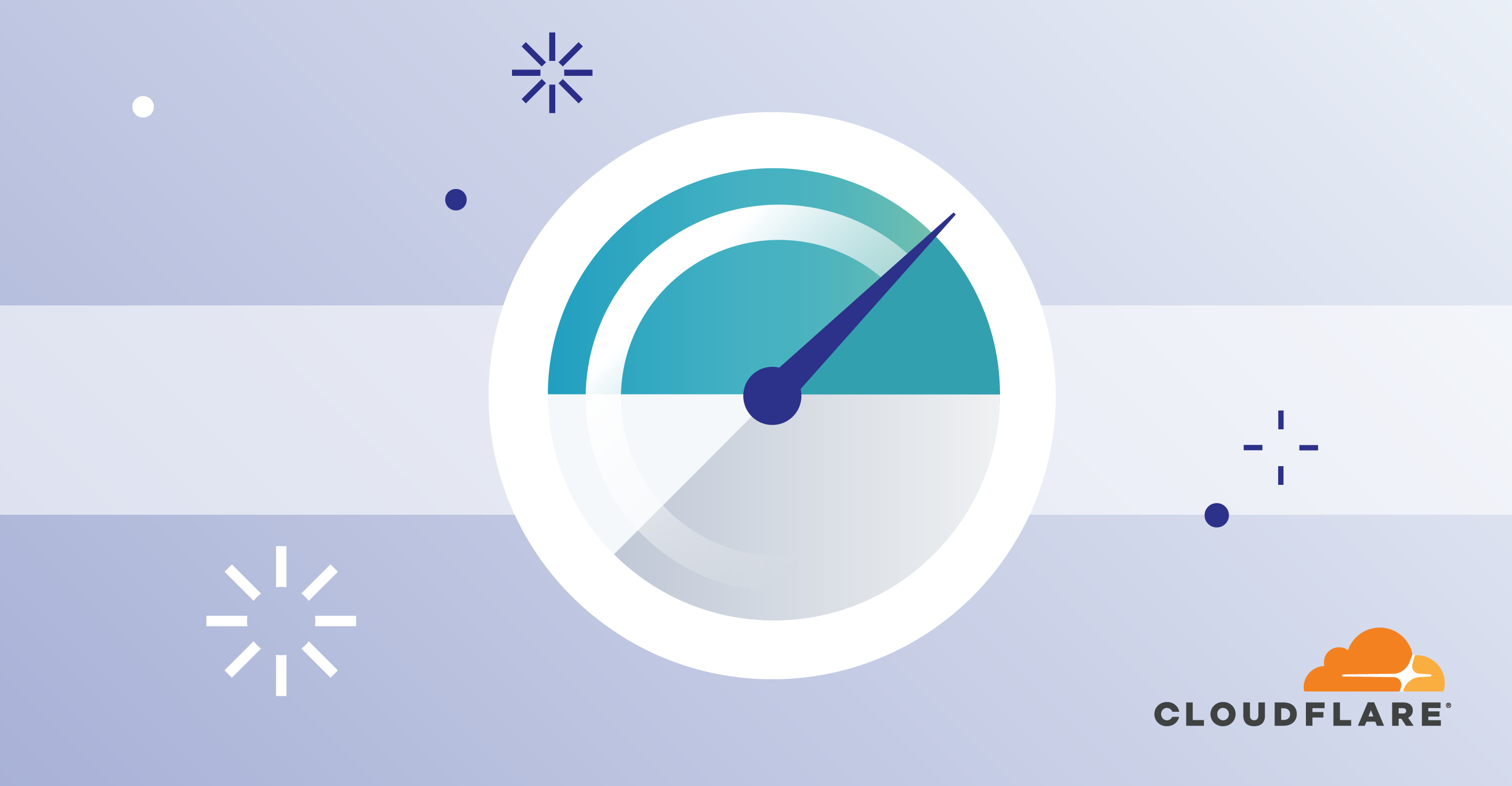
Cloudflare recently shipped improved upload speeds across our network for clients using HTTP/2. This post describes our journey from troubleshooting an issue to fixing it and delivering faster upload speeds to the global Internet.
We launched speed.cloudflare.com in May 2020 to give our users insight into how well their networks perform. The test provides download, upload and latency tests. Soon after release, we received reports from a small number of users that sometimes upload speeds were underreported. Our investigation determined that it seemed to happen with end users that had high upload bandwidth available (several hundreds Mbps class cable modem or fiber service). Our speed tests are performed via browser JavaScript, and most browsers use HTTP/2 by default. We found that HTTP/2 upload speeds were sometimes much slower than HTTP/1.1 (assuming all TLS) when the user had high available upload bandwidth.
Upload speed is more important than ever, especially for people using home broadband connections. As many people have been forced to work from home they’re using their broadband connections differently than before. Prior to the pandemic broadband traffic was very asymmetric (you downloaded way more than you uploaded… think listening to music, or streaming a movie), Continue reading
How Cloudflare uses Cloudflare Spectrum: A look into an intern’s project at Cloudflare
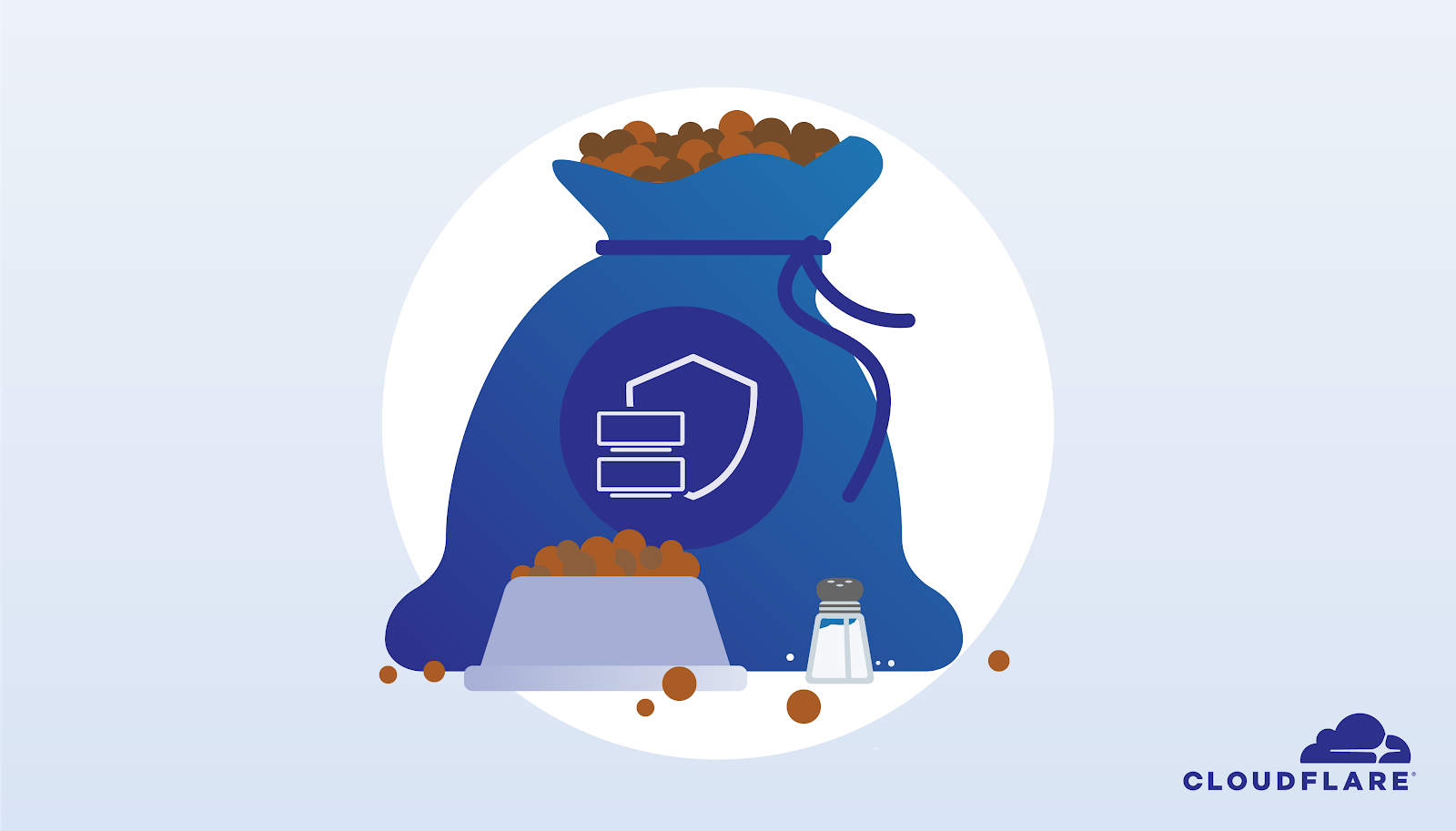
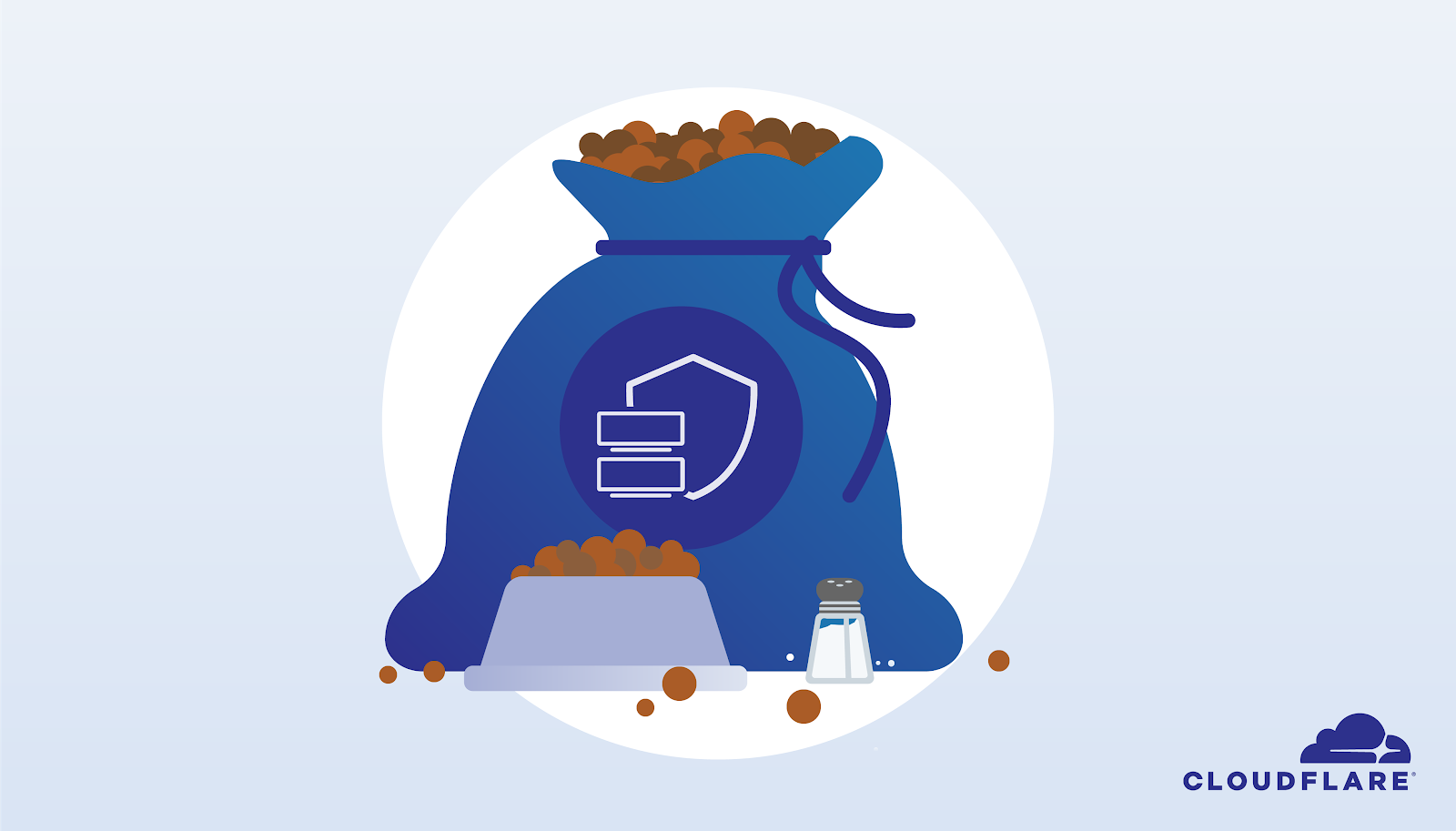
Cloudflare extensively uses its own products internally in a process known as dogfooding. As part of my onboarding as an intern on the Spectrum (a layer 4 reverse proxy) team, I learned that many internal services dogfood Spectrum, as they are exposed to the Internet and benefit from layer 4 DDoS protection. One of my first tasks was to update the configuration for an internal service that was using Spectrum. The configuration was managed in Salt (used for configuration management at Cloudflare), which was not particularly user-friendly, and required an engineer on the Spectrum team to handle updating it manually.
This process took about a week. That should instantly raise some questions, as a typical Spectrum customer can create a new Spectrum app in under a minute through Cloudflare Dashboard. So why couldn’t I?
This question formed the basis of my intern project for the summer.
The Process
Cloudflare uses various IP ranges for its products. Some customers also authorize Cloudflare to announce their IP prefixes on their behalf (this is known as BYOIP). Collectively, we can refer to these IPs as managed addresses. To prevent Bad Stuff (defined later) from happening, we prohibit managed addresses from Continue reading
Introducing Deploy Buttons
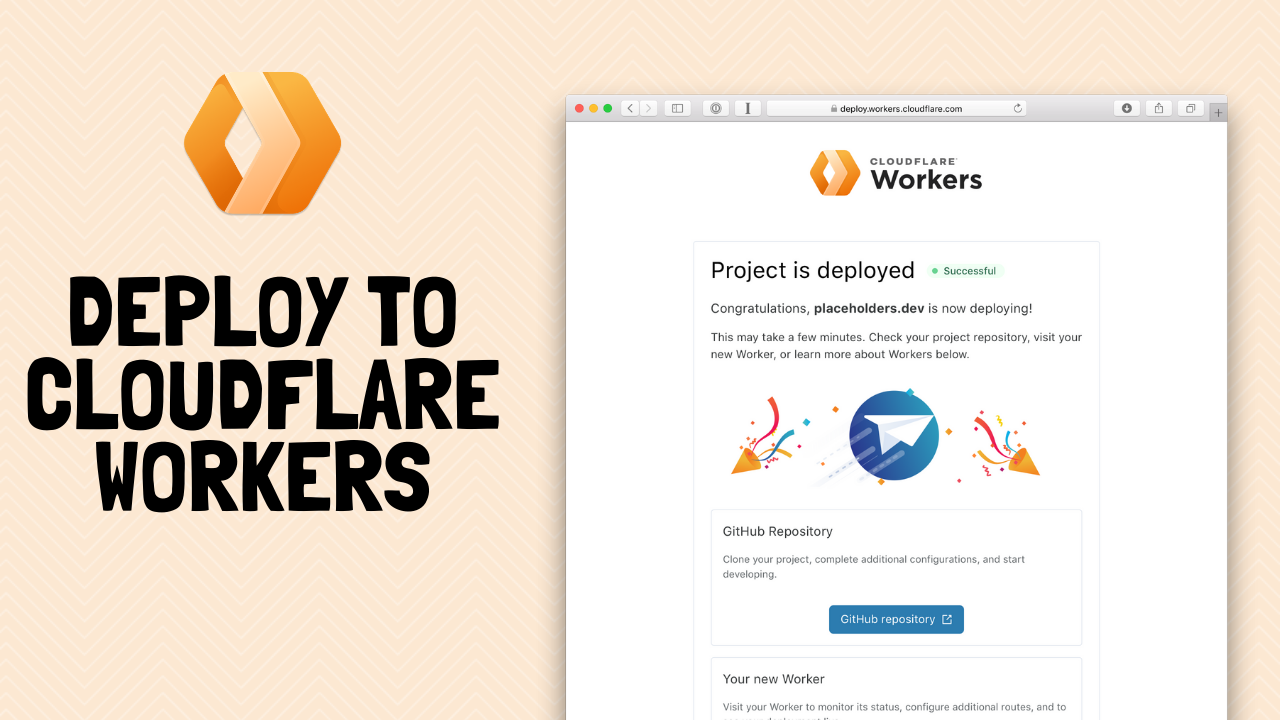
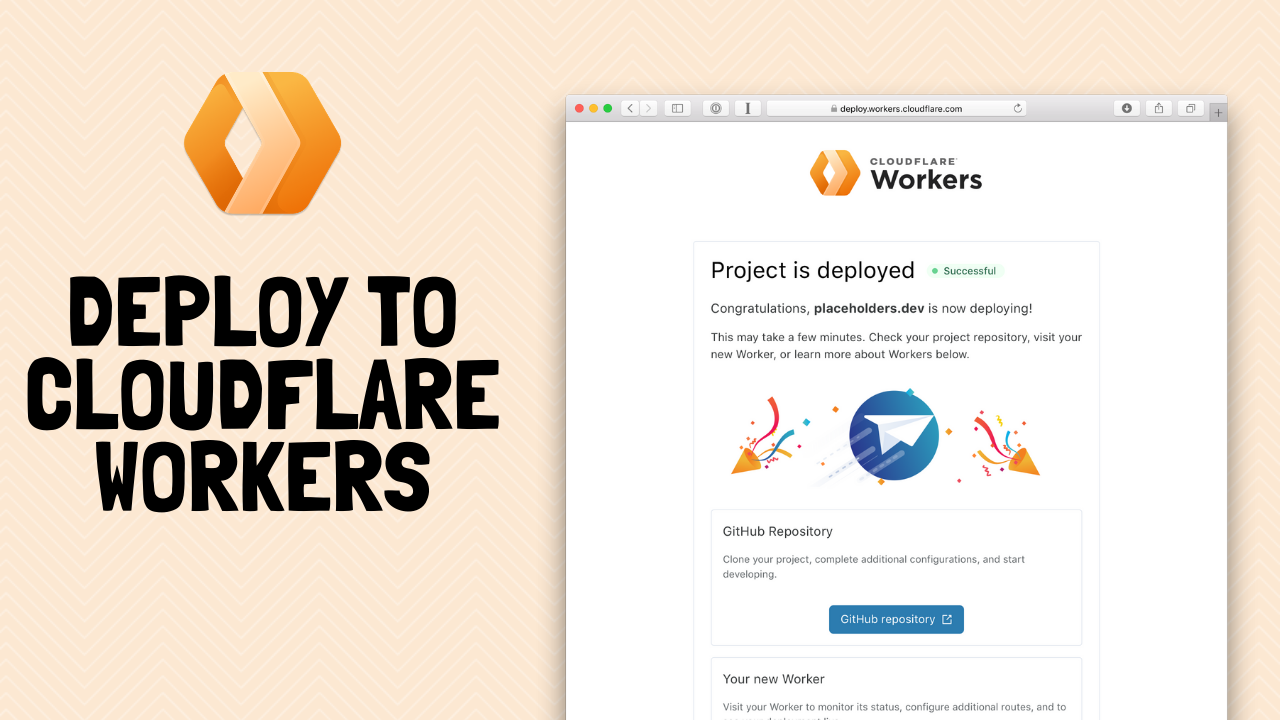
When I first try out new development platforms, the first thing I do is get an OSS (Open Source Software) project I find on Github up and running. I used to start by following tutorials or digging through documentation. It’s a little bit counterintuitive. Let me share with you why. One reason is that Hello, World! examples rarely show the real “magic” of the platform. I want to feel excited and get a sense of how other people are creatively using the platform.
For example, I love it when I can build and deploy an OSS Pokedex app in a few minutes on Flutter to see if the platform actually lives up to the hype. It’s so much easier to do this than to spend a few hours following tutorials and documentation to get through the initial learning curve. You can think of it as shortening the time to first dopamine.
Another reason is that it makes learning the new platform much faster. Building off of an experienced developer’s work shows me which classes and functions are most useful to learn. There’s more nuance to building out full applications than is usually explained in the documentation. I can see how Continue reading
Require hard key auth with Cloudflare Access
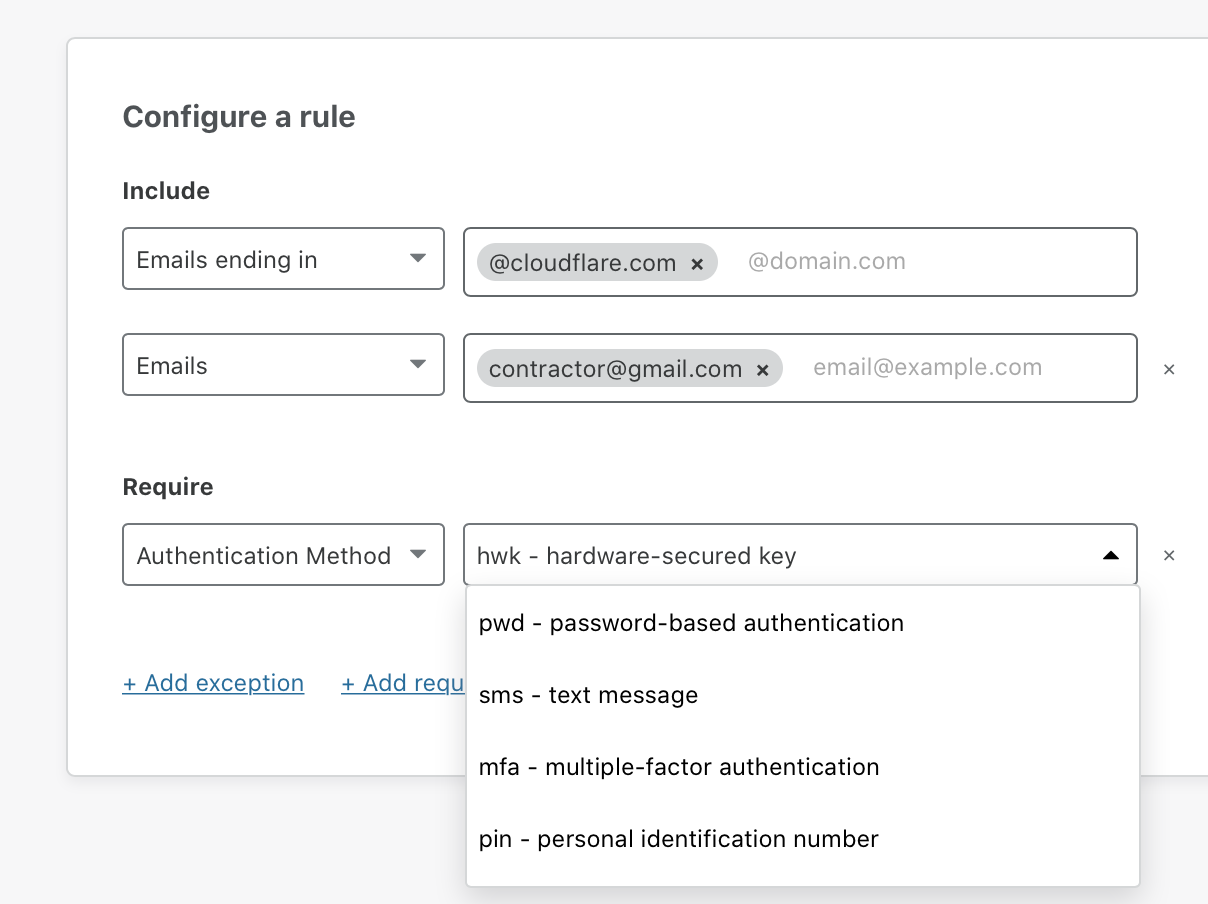
Last month, attackers compromised a Twitter team member’s access to an internal administrative panel in order to take over high-profile accounts. Full details of the breach are still pending, but Twitter has shared that the attackers stole credentials through a coordinated spear phishing attack.
The attackers convinced a team member to share login permissions, giving the attackers the ability to access the Twitter control plane. Once authenticated, they sent password reset flows to email accounts they controlled in order to hijack the Twitter accounts.
Administrative panels like Twitter’s are a rich target for phishing attacks because they give attackers a backdoor to privileged systems. Customer-facing teams at SaaS companies rely on these administrative panels to update end-user data and troubleshoot user account issues. If an attacker can compromise a single team member’s account they can potentially impact thousands of end users.
We have our own administrative panel at Cloudflare and we’ve deployed a number of safeguards over the last several years to keep it secure from phishing attacks. However, we had no way to enforce the security feature we think would most insulate us from phishing attacks: physical hard keys.
With hard keys, users can only login when they use Continue reading
Orange Clouding with Secondary DNS
What is secondary DNS?
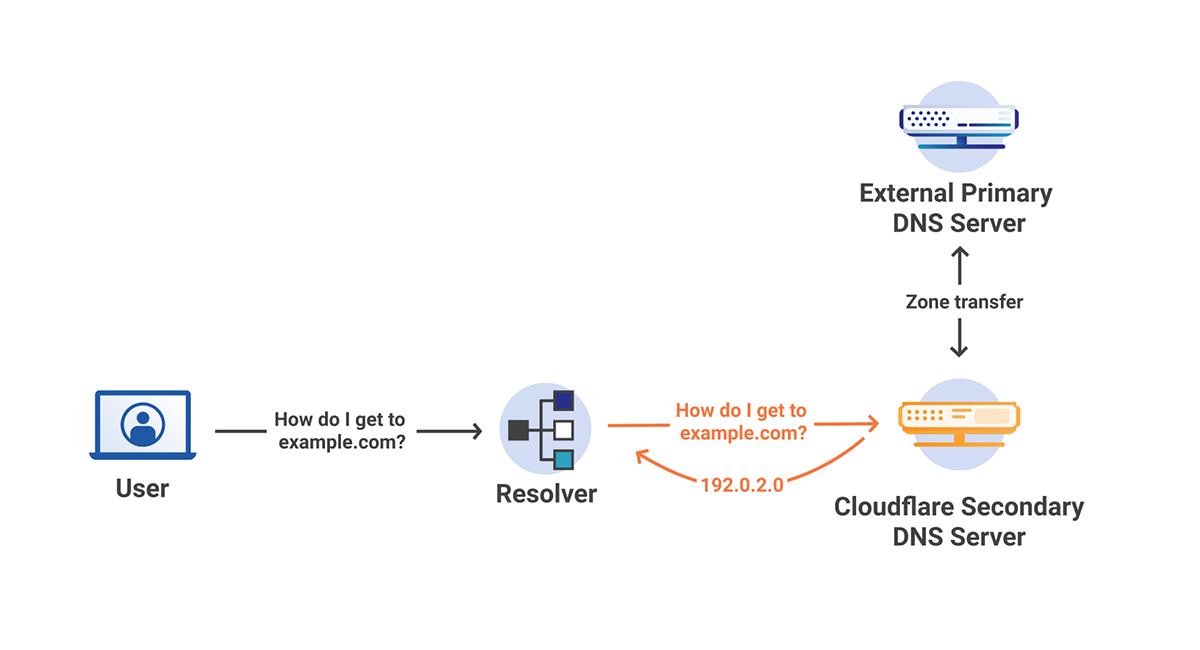
In a traditional sense, secondary DNS servers act as a backup to the primary authoritative DNS server. When a change is made to the records on the primary server, a zone transfer occurs, synchronizing the secondary DNS servers with the primary server. The secondary servers can then serve the records as if they were the primary server, however changes can only be made by the primary server, not the secondary servers. This creates redundancy across many different servers that can be distributed as necessary.
There are many common ways to take advantage of Secondary DNS, some of which are:
- Secondary DNS as passive backup - The secondary DNS server sits idle until the primary server goes down, at which point a failover can occur and the secondary can start serving records.
- Secondary DNS as active backup - The secondary DNS server works alongside the primary server to serve records.
- Secondary DNS with a hidden primary - The nameserver records at the registrar point towards the secondary servers only, essentially treating them as the primary nameservers.
What is secondary DNS Override?
Secondary DNS Override builds on the Secondary DNS with a hidden primary model by allowing our Continue reading
New and improved Workers Docs
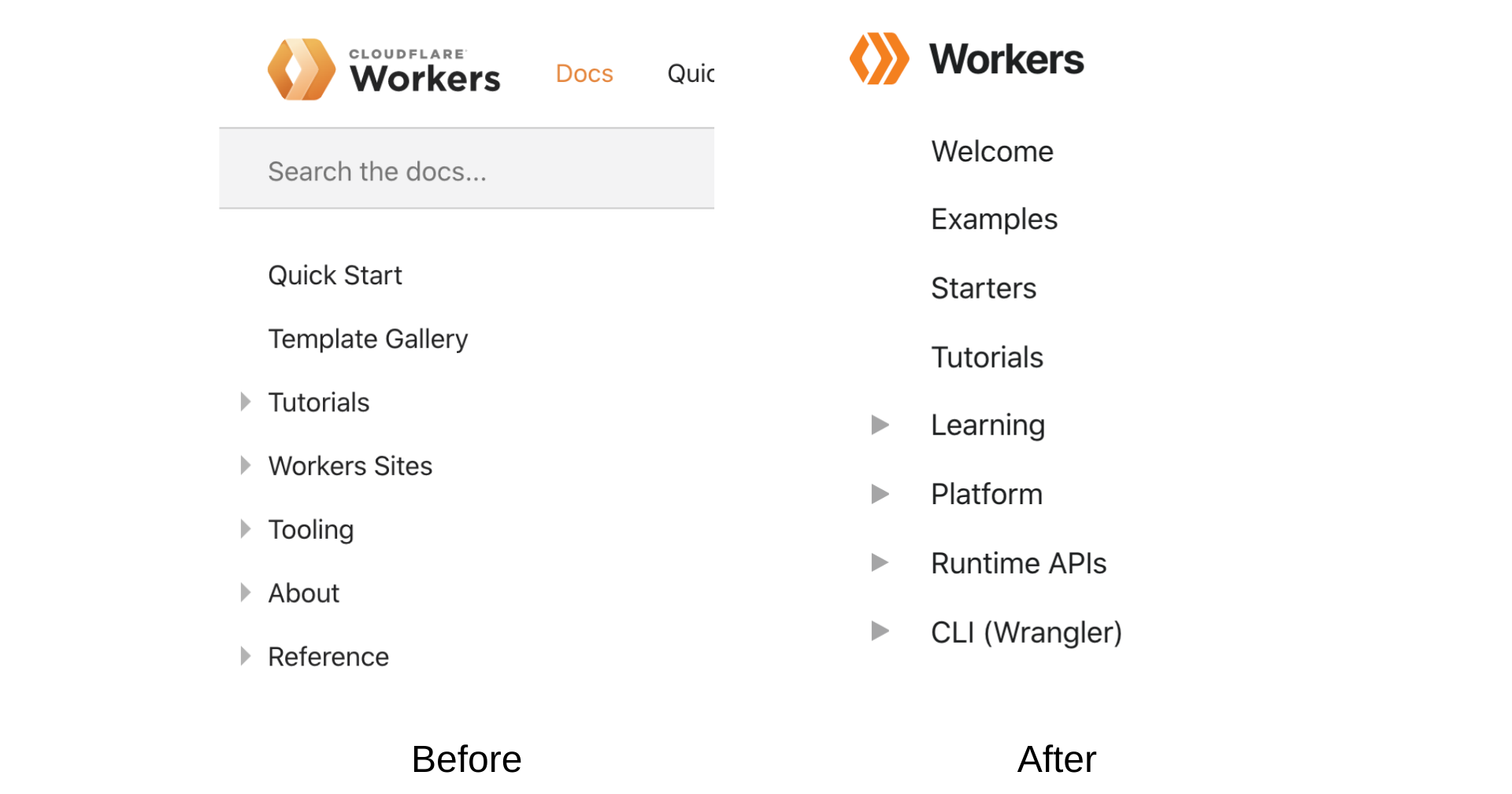
I’m happy to announce several updates to the Workers Docs that will allow you to take full advantage of our Workers platform. We integrated your feedback about the Docs user experience and design. We reorganized and reformatted all of our content. We upgraded the Docs engine to add new UI components. The documentation is now intuitive to navigate and the content is now easy and enjoyable to read.
You can find our new and improved documentation site here and can find the docs engine on our repo.
We hope this creates a better developer experience for you and makes the Docs more approachable to beginners. We plan to use our work and improvements for the Workers Docs to revamp docs for other Cloudflare products too.
Here’s a more detailed breakdown of the Workers Docs update.
Content Organization: We reorganized site content into four categories to make it easier for you to read and find content: Tutorials, How-to guides, Technical reference, and Learning. The new content structure is heavily inspired by Divio’s documentation system.
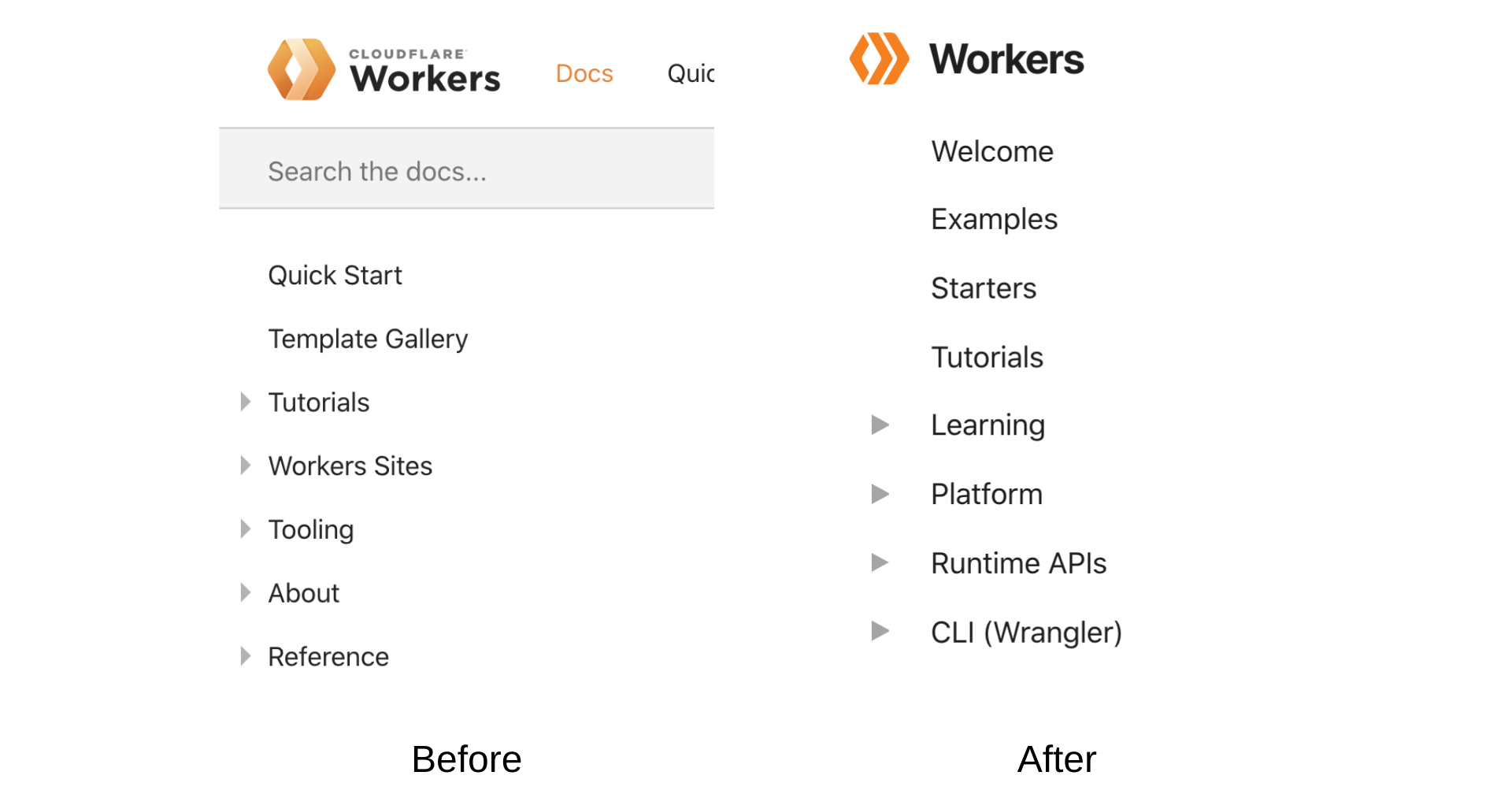
The tutorials section groups together step by step guides for building a specific project on Workers (e.g. teaching a beginner how to cook). The how-to guides Continue reading
Election Cybersecurity: Preparing for the 2020 U.S. Elections.

At Cloudflare, our mission is to help build a better Internet. As we look to the upcoming 2020 U.S. elections, we are reminded that having the Internet be trusted, secure, reliable, and accessible for campaigns and citizens alike is critical to our democracy. We rely on the Internet to share and discover pertinent information such as how to register to vote, find polling locations, or learn more about candidates.
Due to the spread of COVID-19, we are seeing a number of election environments shift online, to varying degrees, with political parties conducting virtual fundraisers, campaigns moving town halls to online platforms and election officials using online forms to facilitate voting by mail. As the 2020 U.S. elections approach, we want to ensure that players in the election space have the tools they need to stay online to promote trust and confidence in the democratic system.
We’re keeping an eye on how this shift to online activities affect cyberattacks. From April to June 2020, for example, we saw a trend of increasing DDoS attacks, with double the amount of L3/4 attacks observed over our network compared to the first three months of 2020. In the election space, we are Continue reading
Why I joined Cloudflare


Customer Service. Business. Growth. While these three make up a large portion of what keeps most enterprise companies operating, they are just the beginning at Cloudflare.
I am excited to share that I have joined Cloudflare as its Chief Customer Officer. Cloudflare has seen explosive growth: we launched only a decade ago and have already amassed nearly 3 million customers and grown from a few 100 enterprise customers to 1000s. Currently, we are at a growth inflection point where more companies are choosing to partner with us and are leveraging our service. We are fortunate to serve these customers with a consistent, high quality experience, no matter where their end-users are located around the world.
But the flare doesn’t stop at performative success
I took this opportunity because Cloudflare serves the world and does what is right over what is easy. Our customers deliver meals to your doors, provide investment and financial advice, produce GPS devices for navigational assistance, and so much more. Our customers span every vertical and industry, as well as every size. By partnering with them, we have a hand in delighting customers everywhere and helping make the Internet better. I am excited to work with them Continue reading
Protecting Remote Desktops at Scale with Cloudflare Access
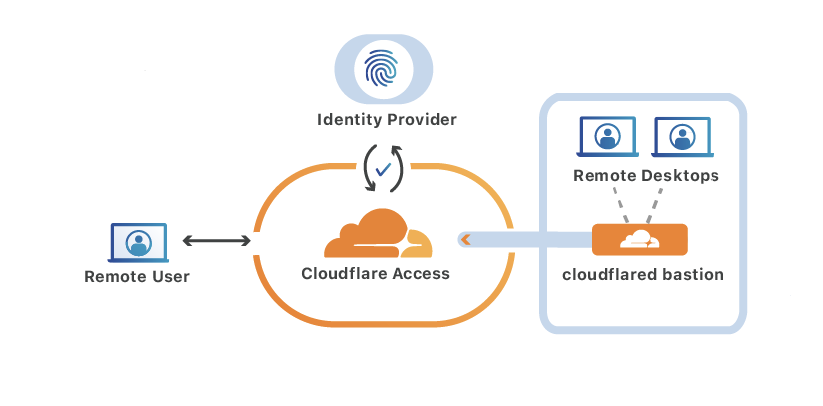
Early last year, before any of us knew that so many people would be working remotely in 2020, we announced that Cloudflare Access, Cloudflare’s Zero Trust authentication solution, would begin protecting the Remote Desktop Protocol (RDP). To protect RDP, customers would deploy Argo Tunnel to create an encrypted connection between their RDP server and our edge - effectively locking down RDP resources from the public Internet. Once locked down with Tunnel, customers could use Cloudflare Access to create identity-driven rules enforcing who could login to their resources.
Setting Tunnel up initially required installing the Cloudflare daemon, cloudflared, on each RDP server. However, as the adoption of remote work increased we learned that installing and provisioning a new daemon on every server in a network was a tall order for customers managing large fleets of servers.
What should have been a simple, elegant VPN replacement became a deployment headache. As organizations helped tens of thousands of users switch to remote work, no one had the bandwidth to deploy tens of thousands of daemons.
Message received: today we are announcing Argo Tunnel RDP Bastion mode, a simpler way to protect RDP connections at scale. ? By functioning as a Continue reading
Network-layer DDoS attack trends for Q2 2020


In the first quarter of 2020, within a matter of weeks, our way of life shifted. We’ve become reliant on online services more than ever. Employees that can are working from home, students of all ages and grades are taking classes online, and we’ve redefined what it means to stay connected. The more the public is dependent on staying connected, the larger the potential reward for attackers to cause chaos and disrupt our way of life. It is therefore no surprise that in Q1 2020 (January 1, 2020 to March 31, 2020) we reported an increase in the number of attacks—especially after various government authority mandates to stay indoors—shelter-in-place went into effect in the second half of March.
In Q2 2020 (April 1, 2020 to June 30, 2020), this trend of increasing DDoS attacks continued and even accelerated:
- The number of L3/4 DDoS attacks observed over our network doubled compared to that in the first three months of the year.
- The scale of the largest L3/4 DDoS attacks increased significantly. In fact, we observed some of the largest attacks ever recorded over our network.
- We observed more attack vectors being deployed and attacks were more geographically distributed.
The number Continue reading
Cloudflare Network Interconnection Partnerships Launch
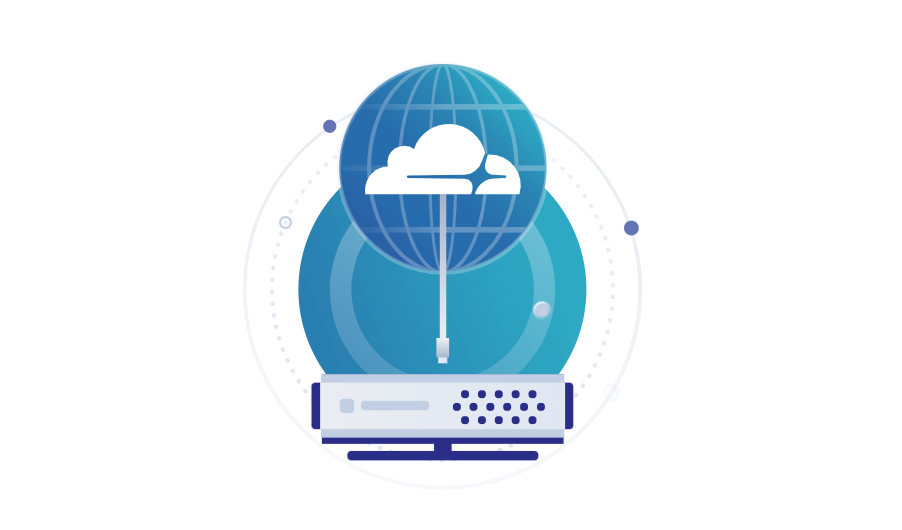
Today we’re excited to announce Cloudflare’s Network Interconnection Partner Program, in support of our new CNI product. As ever more enterprises turn to Cloudflare to secure and accelerate their branch and core networks, the ability to connect privately and securely becomes increasingly important. Today's announcement significantly increases the interconnection options for our customers, allowing them to connect with us in the location of their choice using the method or vendors they prefer.
In addition to our physical locations, our customers can now interconnect with us at any of 23 metro areas across five continents using software-defined layer 2 networking technology. Following the recent release of CNI (which includes PNI support for Magic Transit), customers can now order layer 3 DDoS protection in any of the markets below, without requiring physical cross connects, providing private and secure links, with simpler setup.
Launch Partners
We’re very excited to announce that five of the world's premier interconnect platforms are available at launch. Console Connect by PCCW Global in 14 locations, Megaport in 14 locations, PacketFabric in 15 locations, Equinix ECX Fabric™ in 8 locations and Zayo Tranzact in 3 locations, spanning North America, Europe, Asia, Oceania and Africa.
What is an Interconnection Platform?
Like much of the networking world, there are many terms in the interconnection space for the same thing: Cloud Exchange, Virtual Cross Connect Platform and Interconnection Platform are all synonyms. They are platforms that allow two networks to interconnect privately at layer 2, without requiring additional physical cabling. Instead the customer can order a port and a virtual connection on a dashboard, and the interconnection ‘fabric’ will establish the connection. Since many large customers are already connected to these fabrics for their connections to traditional Cloud providers, it is a very convenient method to establish private connectivity with Cloudflare.
Why interconnect virtually?
Cloudflare has an extensive peering infrastructure and already has private links to thousands of other networks. Virtual private interconnection is particularly attractive to customers with strict security postures and demanding performance requirements, but without the added burden of ordering and managing additional physical cross connects and expanding their physical infrastructure.
Key Benefits of Interconnection Platforms
Secure
Similar to physical PNI, traffic does not pass across the Internet. Rather, it flows from the customer router, to the Interconnection Platform’s network and ultimately to Cloudflare. So while there is still some element of shared infrastructure, it’s not over the public Internet.
Efficient
Modern PNIs are typically a minimum of 1Gbps, but if you have the security motivation without the sustained 1Gbps data transfer rates, then you will have idle capacity. Virtual connections provide for “sub-rate” speeds, which means less than 1Gbps, such as 100Mbps, meaning you only pay for what you use. Most providers also allow some level of “burstiness”, which is to say you can exceed that 100Mbps limit for short periods.
Performance
By avoiding the public Internet, virtual links avoid Internet congestion.
Price
The major cloud providers typically have different pricing for egressing data to the Internet compared to an Interconnect Platform. By connecting to your cloud via an Interconnect Partner, you can benefit from those reduced egress fees between your cloud and the Interconnection Platform. This builds on our Bandwidth Alliance to give customers more options to continue to drive down their network costs.
Less Overhead
By virtualizing, you reduce physical cable management to just one connection into the Interconnection Platform. From there, everything defined and managed in software. For example, ordering a 100Mbps link to Cloudflare can be a few clicks in a Dashboard, as would be a 100Mbps link into Salesforce.
Data Center Independence
Is your infrastructure in the same metro, but in a different facility to Cloudflare? An Interconnection Platform can bring us together without the need for additional physical links.
Where can I connect?
- In any of our physical facilities
- In any of the 23 metro areas where we are currently connected to an Interconnection Platform (see below)
- If you’d like to connect virtually in a location not yet listed below, simply get in touch via our interconnection page and we’ll work out the best way to connect.
Metro Areas
The metro areas below have currently active connections. New providers and locations can be turned up on request.
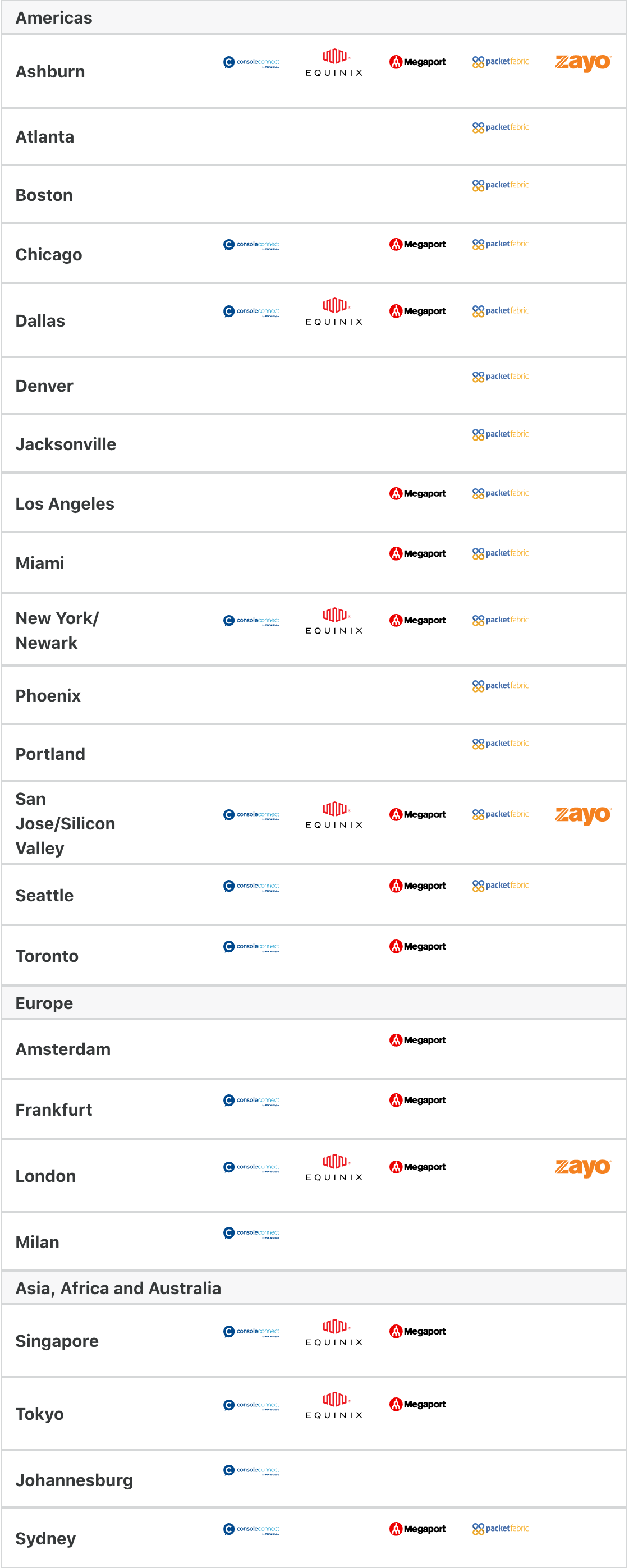
What’s next?
Our customers have been asking for direct on-ramps to our global network for a long time and we’re excited to deliver that today with both physical and virtual connectivity of the world’s leading interconnection Platforms.
Already a Cloudflare customer and connected with one of our Interconnection partners? Then contact your account team today to get connected and benefit from improved reliability, security and privacy of Cloudflare Network Interconnect via our interconnection partners.
Are you an Interconnection Platform with customers demanding direct connectivity to Cloudflare? Head to our partner program page and click “Become a partner”. We’ll continue to add platforms and partners according to customer demand.
"Equinix and Cloudflare share the vision of software-defined, virtualized and API-driven network connections. The availability of Cloudflare on the Equinix Cloud Exchange Fabric demonstrates that shared vision and we’re excited to offer it to our joint customers today."
– Joseph Harding, Equinix, Vice President, Global Product & Platform MarketingSoftware Developer
"Cloudflare and Megaport are driven to offer greater flexibility to our customers. In addition to accessing Cloudflare’s platform on Megaport’s global internet exchange service, customers can now provision on-demand, secure connections through our Software Defined Network directly to Cloudflare Network Interconnect on-ramps globally. With over 700 enabled data centres in 23 countries, Megaport extends the reach of CNI onramps to the locations where enterprises house their critical IT infrastructure. Because Cloudflare is interconnected with our SDN, customers can point, click, and connect in real time. We’re delighted to grow our partnership with Cloudflare and bring CNI to our services ecosystem — allowing customers to build multi-service, securely-connected IT architectures in a matter of minutes."
– Matt Simpson, Megaport, VP of Cloud Services
“The ability to self-provision direct connections to Cloudflare’s network from Console Connect is a powerful tool for enterprises as they come to terms with new demands on their networks. We are really excited to bring together Cloudflare’s industry-leading solutions with PCCW Global’s high-performance network on the Console Connect platform, which will deliver much higher levels of network security and performance to businesses worldwide.”
– Michael Glynn, PCCW Global, VP of Digital Automated Innovation
"Our customers can now connect to Cloudflare via a private, secure, and dedicated connection via the PacketFabric Marketplace. PacketFabric is proud to be the launch partner for Cloudflare's Interconnection program. Our large U.S. footprint provides the reach and density that Cloudflare customers need."
– Dave Ward, PacketFabric CEO
Introducing Cloudflare Network Interconnect
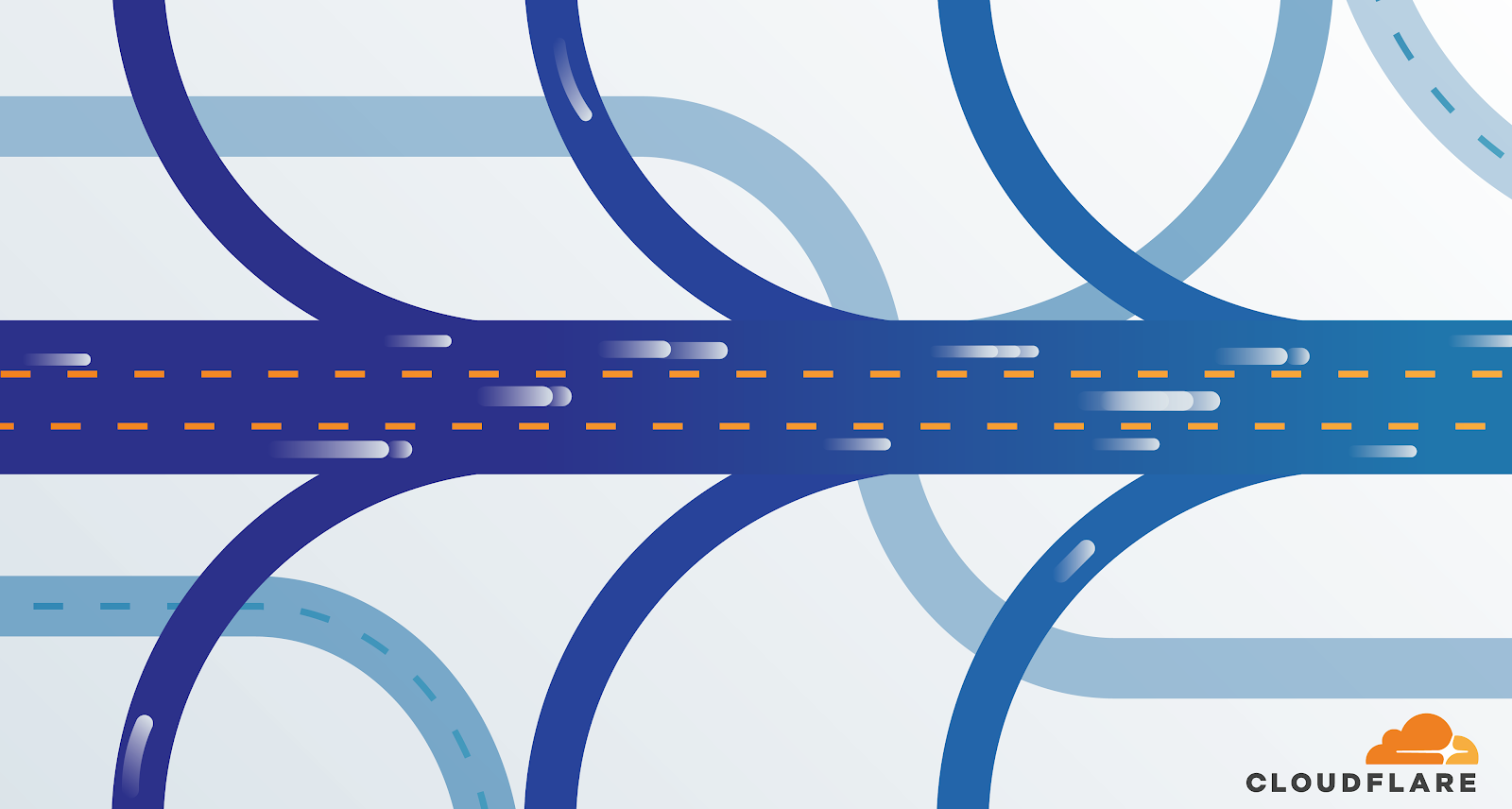
Today we’re excited to announce Cloudflare Network Interconnect (CNI). CNI allows our customers to interconnect branch and HQ locations directly with Cloudflare wherever they are, bringing Cloudflare’s full suite of network functions to their physical network edge. Using CNI to interconnect provides security, reliability, and performance benefits vs. using the public Internet to connect to Cloudflare. And because of Cloudflare’s global network reach, connecting to our network is straightforward no matter where on the planet your infrastructure and employees are.
At its most basic level, an interconnect is a link between two networks. Today, we’re offering customers the following options to interconnect with Cloudflare’s network:
- Via a private network interconnect (PNI). A physical cable (or a virtual “pseudo-wire”; more on that later) that connects two networks.
- Over an Internet Exchange (IX). A common switch fabric where multiple Internet Service Providers (ISPs) and Internet networks can interconnect with each other.
To use a real world analogy: Cloudflare over the years has built a network of highways across the Internet to handle all our customers' traffic. We’re now providing dedicated on-ramps for our customers’ on-prem networks to get onto those highways.
Why interconnect with Cloudflare?
CNI provides more reliable, faster, and more Continue reading
My living room intern experience at Cloudflare
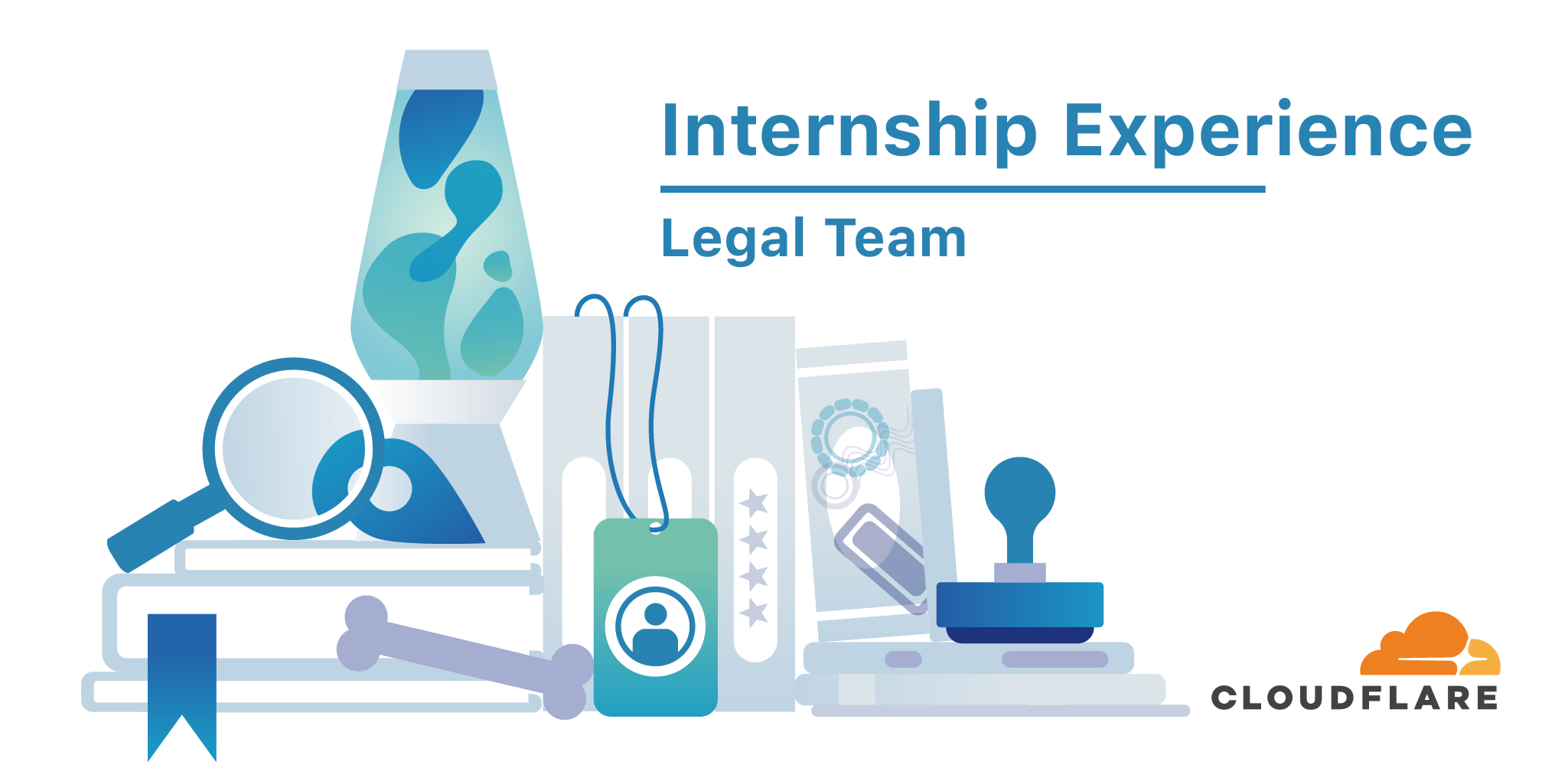
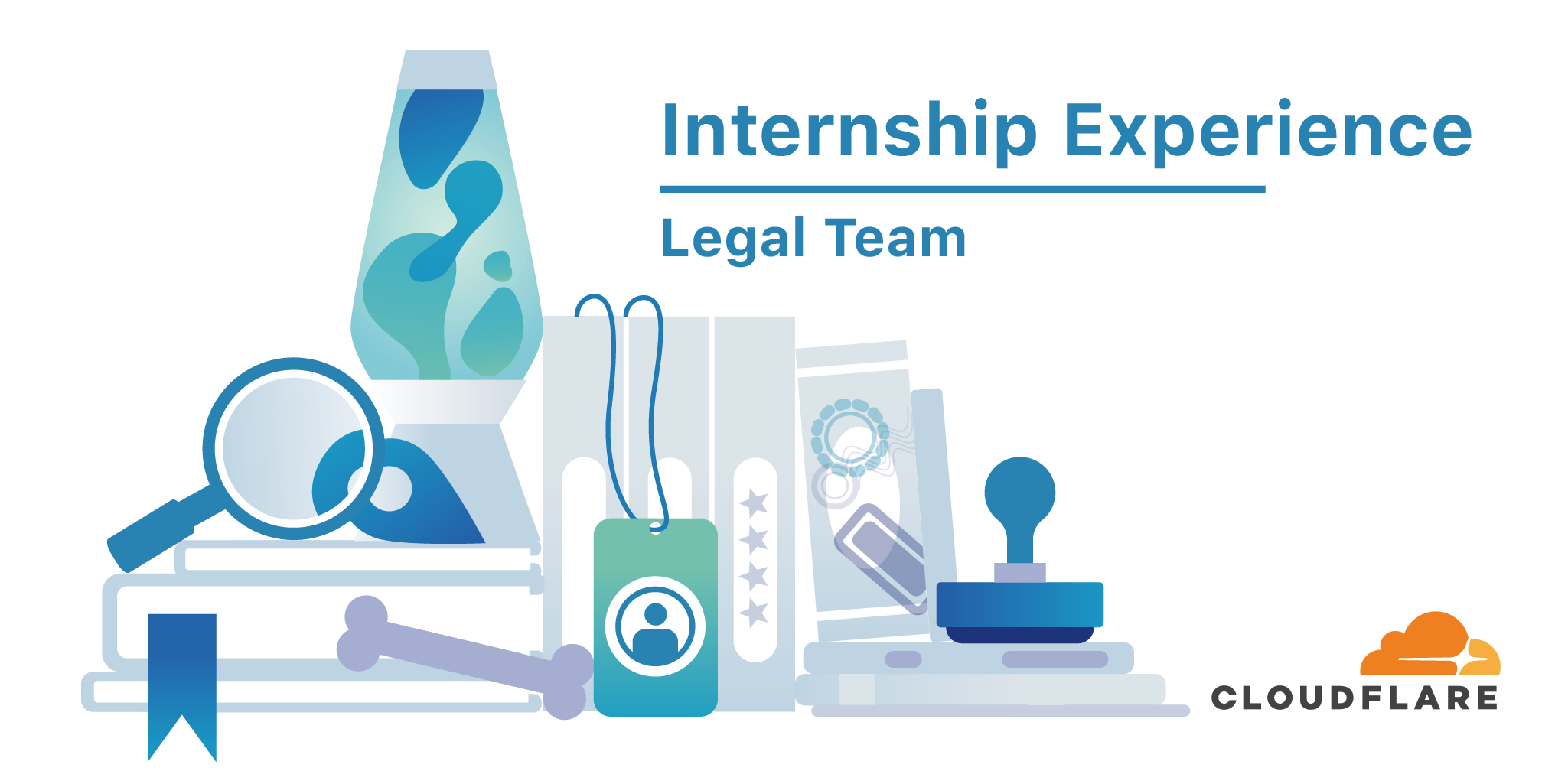
This was an internship unlike any other. With a backdrop of a pandemic, protests, and a puppy that interrupted just about every Zoom meeting, it was also an internship that demonstrated Cloudflare’s leadership in giving students meaningful opportunities to explore their interests and contribute to the company’s mission: to help build a better Internet.
For the past twelve weeks, I’ve had the pleasure of working as a Legal Intern at Cloudflare. A few key things set this internship apart from even those in which I’ve been able to connect with people in-person:
- Communication
- Community
- Commingling
- Collaboration
Ever since I formally accepted my internship, the Cloudflare team has been in frequent and thorough communication about what to expect and how to make the most of my experience. This approach to communication was in stark contrast to the approach taken by several other companies and law firms. The moment COVID-19 hit, Cloudflare not only reassured me that I’d still have a job, the company also doubled down on bringing on more interns. Comparatively, a bunch of my fellow law school students were left in limbo: unsure of if they had a job, the extent to which they’d be able to do it Continue reading
Commit to Diversity, Equity and Inclusion, Every Day

The world is waking up
Protesting in the name of Black Lives Matter.
Reading the book “White Fragility”.
Watching the documentary “13th”.
The world is waking up to the fight against racism and I couldn’t be happier!
But let’s be clear: learning about anti-racism and being anti-racist are not the same things. Learning is a good first step and a necessary one. But if you don’t apply the knowledge you acquire, then you are not helping to move the needle.

Since the murder of George Floyd at the hands/knees of the Minneapolis police, people all over the world have been focused on Black Lives Matter and anti-racism. At Cloudflare, we’ve seen an increase in cyberattacks, we’ve heard from the leadership of Afroflare, our Employee Resource Group for employees of African descent, and we held our first ever Day On, held on June 18, Cloudflare’s employee day of learning about bias, the history and psychological effects of racism,, and how racism can get baked into algorithms.
By way of this blog post, I want to share my thoughts about where I think we go from here and how I believe we can truly embody Diversity Equity and Inclusion (DEI) Continue reading
Making magic: Reimagining Developer Experience for the World of Serverless
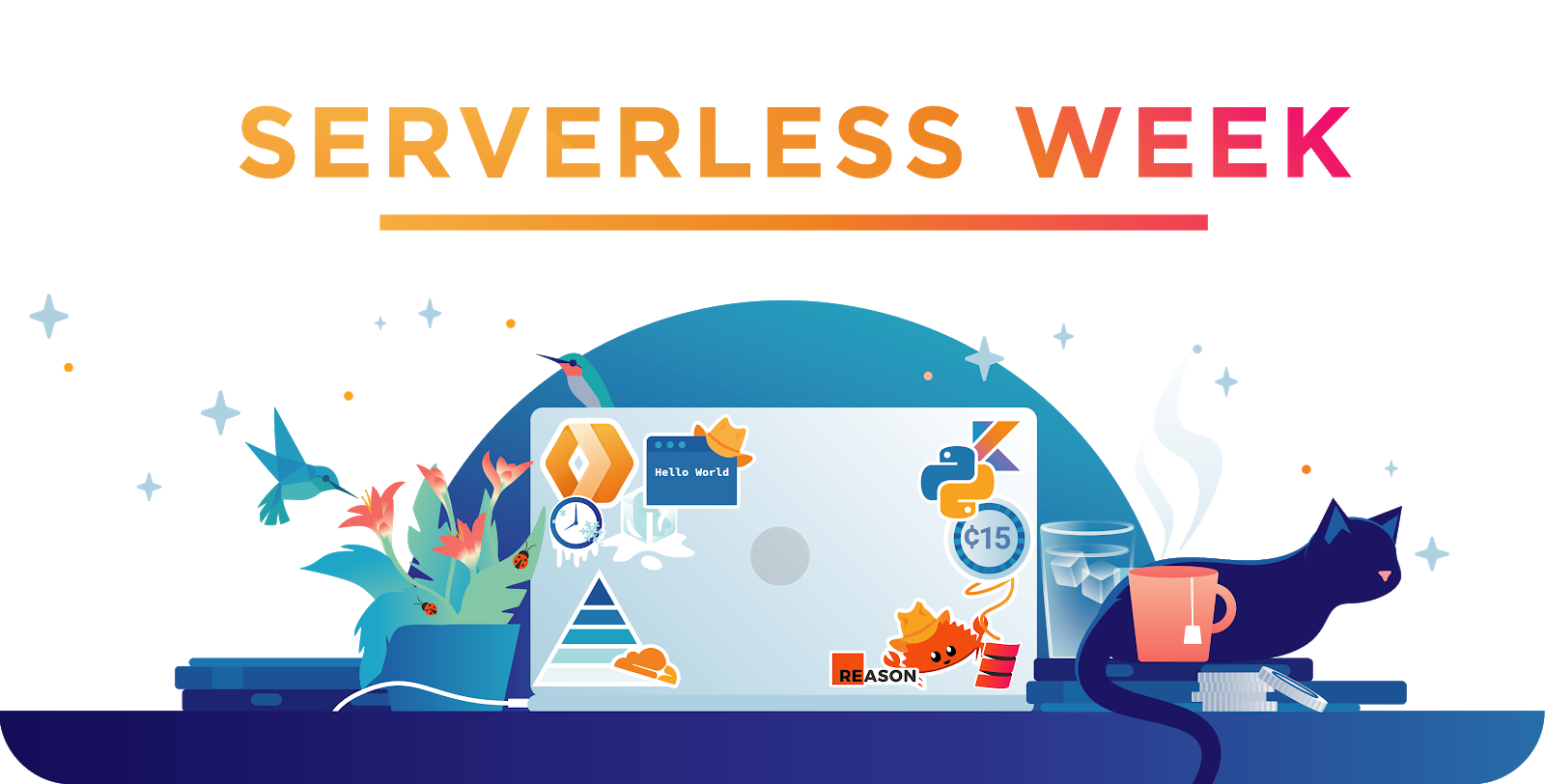

This week we’ve talked about how Workers provides a step function improvement in the TTFB (time to first byte) of applications, by running lightweight isolates in over 200 cities around the world, free of cold starts. Today I’m going to talk about another metric, one that’s arguably even more important: TTFD, or time to first dopamine, and announce a huge improvement to the Workers development experience — wrangler dev, our edge-based development environment with all the perks of a local environment.
There’s nothing quite like the rush of getting your first few lines of code to work — no matter how many times you’ve done it before, there's something so magical about the computer understanding exactly what you wanted it to do and doing it!

This is the kind of magic I expected of “serverless”, and while it’s true that most serverless offerings today get you to that feeling faster than setting up a virtual server ever would, I still can’t help but be disappointed with how lackluster developing with most serverless platforms is today.
Some of my disappointment can be attributed to the leaky nature of the abstraction: the journey to getting you to the point of writing Continue reading
Bringing Your Own IPs to Cloudflare (BYOIP)
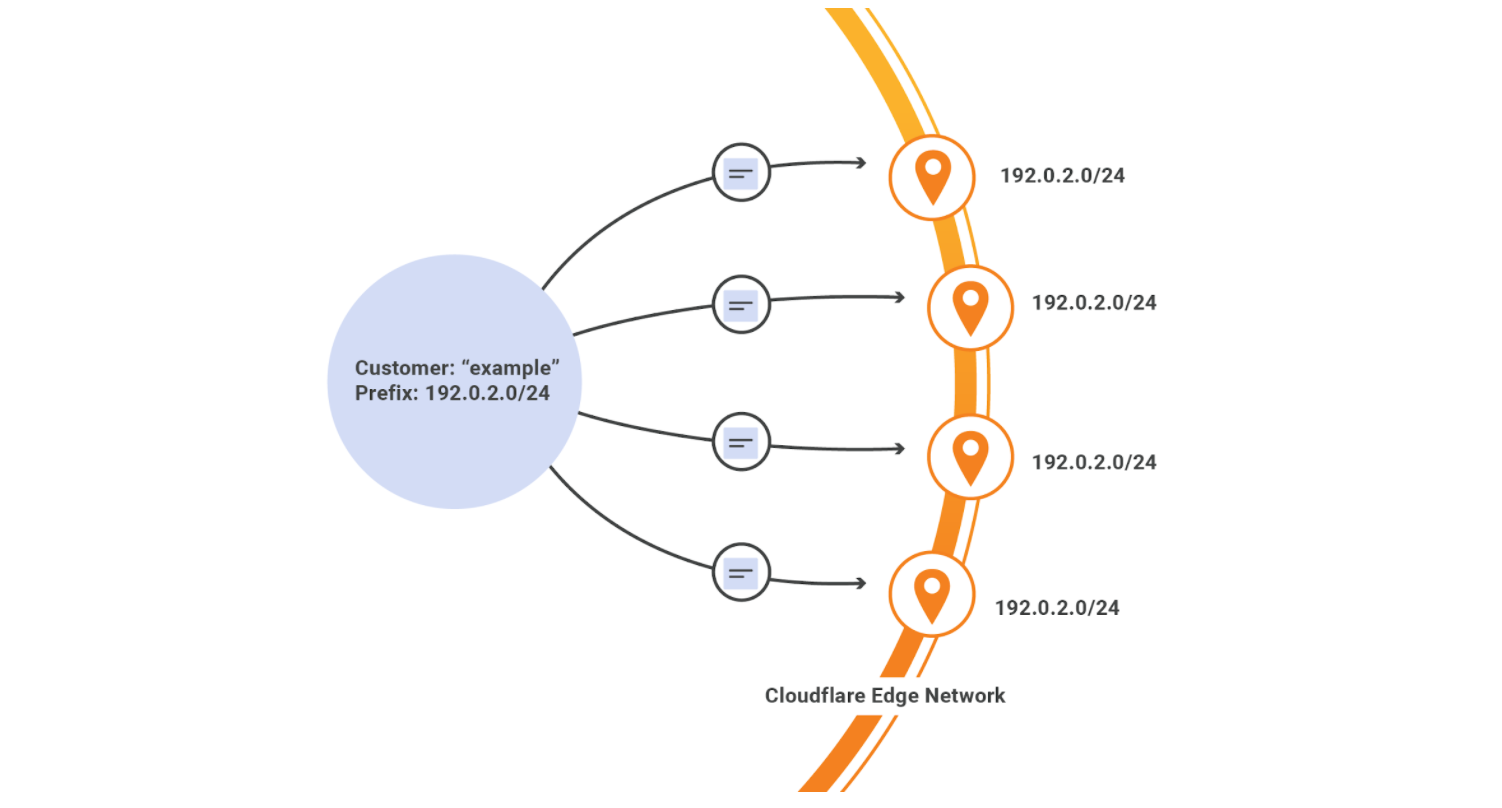
Today we’re thrilled to announce general availability of Bring Your Own IP (BYOIP) across our Layer 7 products as well as Spectrum and Magic Transit services. When BYOIP is configured, the Cloudflare edge will announce a customer’s own IP prefixes and the prefixes can be used with our Layer 7 services, Spectrum, or Magic Transit. If you’re not familiar with the term, an IP prefix is a range of IP addresses. Routers create a table of reachable prefixes, known as a routing table, to ensure that packets are delivered correctly across the Internet.
As part of this announcement, we are listing BYOIP on the relevant product pages, developer documentation, and UI support for controlling your prefixes. Previous support was API only.
Customers choose BYOIP with Cloudflare for a number of reasons. It may be the case that your IP prefix is already allow-listed in many important places, and updating firewall rules to also allow Cloudflare address space may represent a large administrative hurdle. Additionally, you may have hundreds of thousands, or even millions, of end users pointed directly to your IPs via DNS, and it would be hugely time consuming to get them all to update their records Continue reading
Eliminating cold starts with Cloudflare Workers
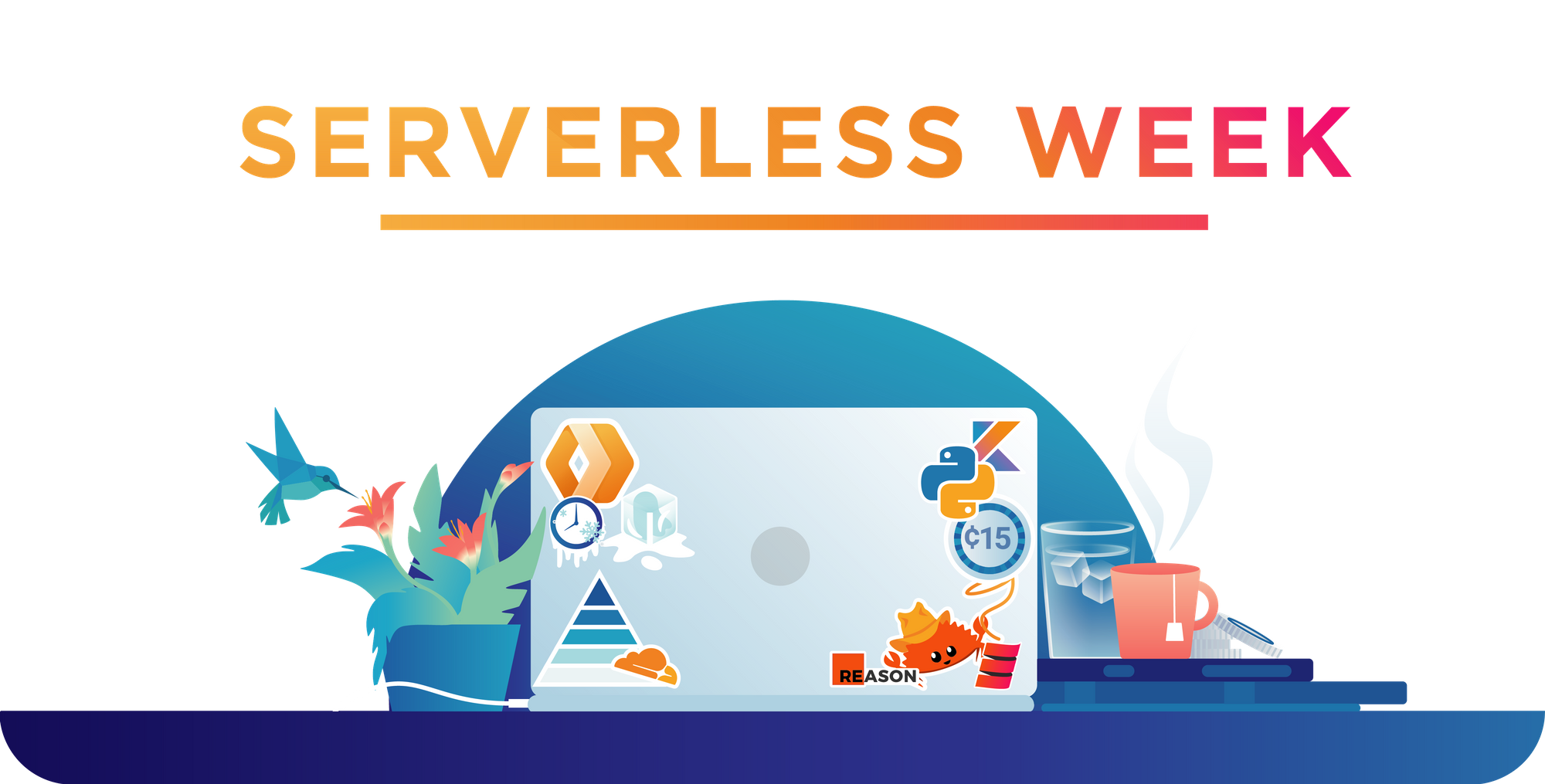
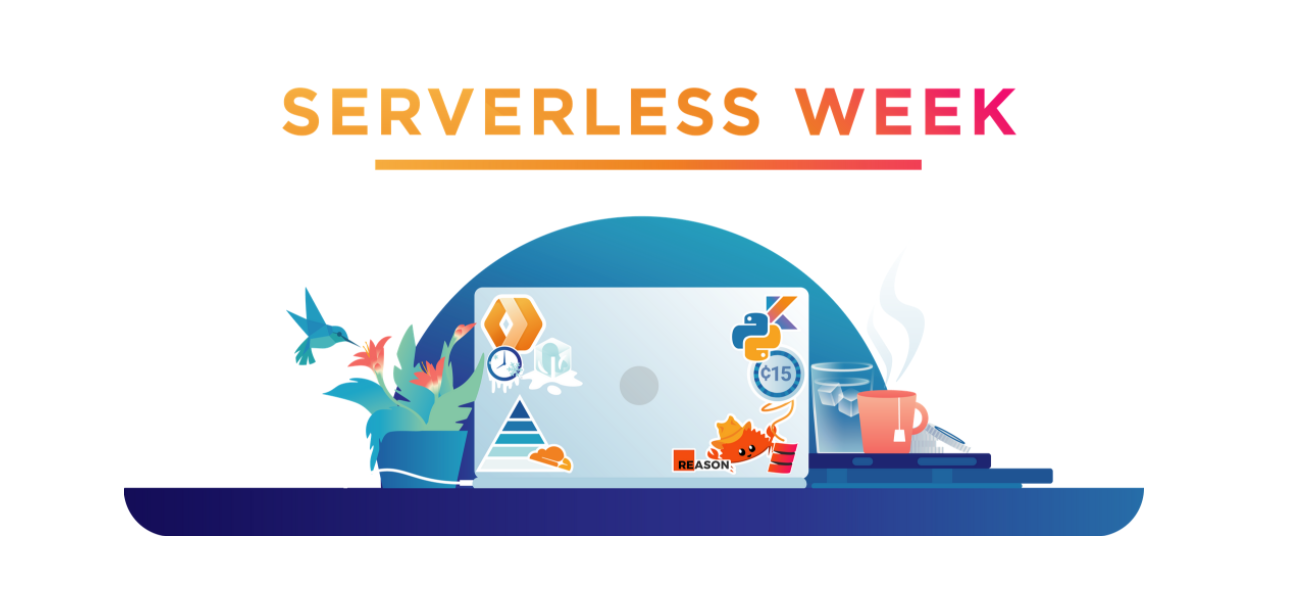
A “cold start” is the time it takes to load and execute a new copy of a serverless function for the first time. It’s a problem that’s both complicated to solve and costly to fix. Other serverless platforms make you choose between suffering from random increases in execution time, or paying your way out with synthetic requests to keep your function warm. Cold starts are a horrible experience, especially when serverless containers can take full seconds to warm up.

Unlike containers, Cloudflare Workers utilize isolate technology, which measure cold starts in single-digit milliseconds. Well, at least they did. Today, we’re removing the need to worry about cold starts entirely, by introducing support for Workers that have no cold starts at all – that’s right, zero. Forget about cold starts, warm starts, or... any starts, with Cloudflare Workers you get always-hot, raw performance in more than 200 cities worldwide.
Why is there a cold start problem?
It’s impractical to keep everyone’s functions warm in memory all the time. Instead, serverless providers only warm up a function after the first request is received. Then, after a period of inactivity, the function becomes cold again and the cycle continues.
For Workers, this has Continue reading